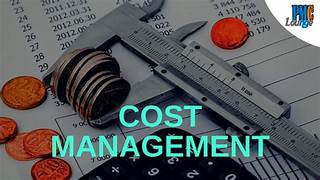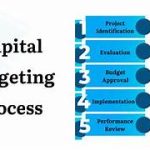The Biggest Problems Value and Cost Managers Must Face
Introduction
In today’s competitive business environment, value and cost managers play a crucial role in ensuring that companies maximize their resources while delivering high-quality products and services. These professionals must navigate complex financial landscapes, balancing cost efficiency with value creation. However, they face several challenges that can impact a company’s profitability and long-term success. This article explores the biggest problems value and cost managers must face and provides insights into how they can overcome them.
1. Balancing Cost Reduction with Quality
One of the most significant challenges for value and cost managers is reducing costs without compromising the quality of products or services. While cutting expenses can improve profitability, it can also lead to inferior products, dissatisfied customers, and reputational damage.
Solution:
- Implement lean management techniques to eliminate waste without sacrificing quality.
- Invest in quality control processes to ensure product standards remain high.
- Conduct cost-benefit analyses to determine the long-term effects of cost-cutting measures.
2. Managing Supply Chain Costs and Risks
With globalization, supply chain costs and risks have become a major concern for businesses. Value and cost managers must deal with fluctuating raw material prices, logistical disruptions, and supplier reliability issues.
Solution:
- Diversify suppliers to reduce dependency on a single source.
- Use data analytics to predict cost fluctuations and mitigate risks.
- Negotiate long-term contracts with suppliers to secure stable pricing.
3. Achieving Cost Efficiency in a Competitive Market
Companies must keep prices competitive while maintaining profitability. This is especially challenging in industries where competitors offer similar products at lower prices.
Solution:
- Focus on operational efficiency by automating repetitive tasks.
- Adopt cost-saving technologies such as cloud computing and AI-driven analytics.
- Offer value-added services to differentiate from competitors rather than engaging in price wars.
4. Managing Unexpected Economic Fluctuations
Economic downturns, inflation, and currency fluctuations can significantly impact costs and profitability. Value and cost managers must constantly adapt to changing economic conditions.
Solution:
- Build financial resilience by maintaining emergency funds.
- Develop flexible pricing models that can be adjusted based on market conditions.
- Continuously monitor economic trends to anticipate and react to potential disruptions.
5. Ensuring Compliance with Financial Regulations
Compliance with financial regulations is a critical aspect of cost management. Failure to adhere to legal and industry standards can result in penalties and legal issues.
Solution:
- Stay updated with changing regulations and ensure company policies align with them.
- Conduct regular audits to identify and address compliance risks.
- Invest in compliance management software to automate regulatory adherence.
6. Controlling Labor Costs While Maintaining Productivity
Labor costs account for a significant portion of a company’s expenses. Value and cost managers must strike a balance between reducing labor costs and ensuring employee productivity and satisfaction.
Solution:
- Implement performance-based incentives to boost efficiency.
- Use workforce management software to optimize scheduling and minimize overtime costs.
- Provide training programs to enhance employee skills and productivity.
7. Technology Investment vs. Cost Constraints
While investing in technology can improve efficiency and reduce long-term costs, many businesses struggle with the initial investment required for digital transformation.
Solution:
- Conduct ROI analyses before making large technology investments.
- Start with scalable solutions that can be expanded as needed.
- Leverage cloud-based and subscription-based services to minimize upfront costs.
8. Aligning Cost Management with Long-Term Strategic Goals
Short-term cost-cutting measures can sometimes conflict with a company’s long-term vision. Value and cost managers must ensure that cost-saving initiatives do not hinder growth and innovation.
Solution:
- Develop a long-term cost management strategy aligned with business goals.
- Encourage innovation and process improvements that lead to sustainable cost reductions.
- Continuously review and adjust cost strategies based on market dynamics.
9. Managing Stakeholder Expectations
Cost and value managers must address the concerns of multiple stakeholders, including executives, employees, customers, and investors, each of whom may have different priorities.
Solution:
- Communicate cost management goals and benefits clearly to all stakeholders.
- Involve key stakeholders in decision-making processes to ensure alignment.
- Use data-driven reports to justify cost-saving measures and demonstrate value creation.
10. Handling Price Volatility of Raw Materials
Price fluctuations in raw materials can make cost estimation difficult, impacting overall budgeting and profitability.
Solution:
- Hedge against price volatility by securing long-term contracts with suppliers.
- Diversify raw material sources to minimize dependency on a single supplier.
- Optimize inventory management to prevent over-purchasing or stockouts.
Conclusion
Value and cost managers play a vital role in helping businesses remain competitive and financially stable. By effectively balancing cost reduction with value creation, managing supply chain risks, adapting to economic fluctuations, and leveraging technology, they can overcome these challenges. Implementing strategic financial planning and maintaining compliance with regulations will also ensure long-term success. Ultimately, businesses that focus on sustainable cost management will be better positioned for growth and profitability.


